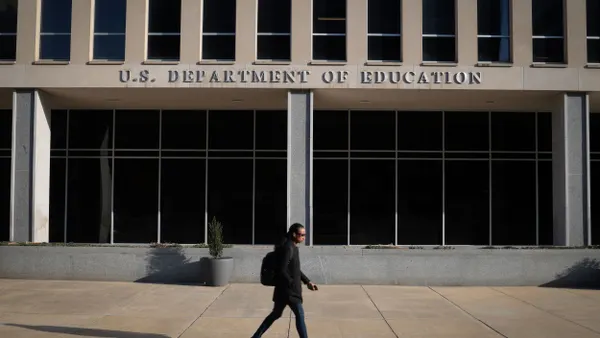Dive Brief:
- The Lanier Cluster is a group of schools using project-based learning to teach students how to solve real-world problems while still in a classroom setting.
- White Oak Elementary is one of these schools, where children as young as kindergarten are taught how to use tools such as Google Docs to prepare them for “student-driven learning,” according to Edutopia. Students continue to learn how to use these skills while at Lanier Middle School so that when they arrive at Lanier High School, they can launch independent projects with their peers.
- Teachers are encouraged to collaborate as well, working together to plan lessons as a team and challenging each other to build curriculum for students.
Dive Insight:
The best curriculum stretches across a child’s entire K12 career. That is the basics of an education: a child learning about numbers in elementary school is ideally ready for calculus when they reach high school.
At the core level, this happens naturally. At each grade, students pick up new skills, tools and academic strengths that carry them forward through their education. But when these lessons are more deliberate — when curriculum is mapped from elementary school through high school — the opportunity for students are enhanced. So says a recent report from the United Nations Educational, Scientific and Cultural Organization (UNESCO), which notes that a quality curriculum is “coherent and consistent across different education stages/grades/streams and learning areas/subjects.”
Consistency throughout curriculum planning is crucial, then, to not only educate children, but to prepare them for what they’ll need when they leave school. Curriculum designers should make sure that a consistent thread is present throughout — even if just planting a seed of an idea in the early years. The goal is to see students flower into the learners, workers and inventors they hope to be — and that we need them to be — in the future.










